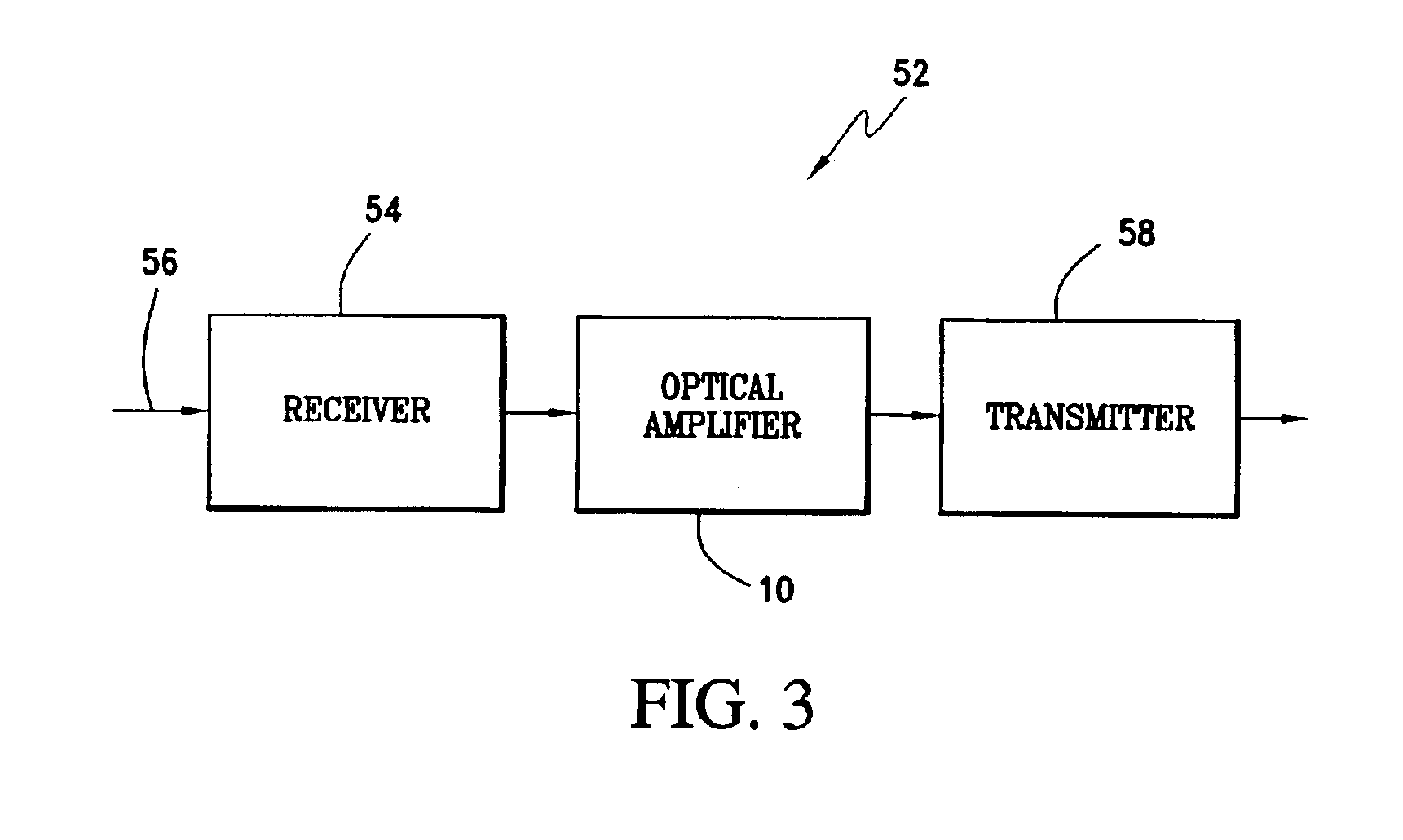Stimulated polariton scattering optical amplifier
- Summary
- Abstract
- Description
- Claims
- Application Information
AI Technical Summary
Benefits of technology
Problems solved by technology
Method used
Image
Examples
Embodiment Construction
[0011]Referring to the drawings and the characters of reference marked thereon, FIG. 1 illustrates a preferred embodiment of the present invention, designated generally as 10. An incoming laser beam 12 is received by a first control optics assembly, designated generally as 14. The laser beam, λ1, may be generally described as an electromagnetic or light beam with a single narrow wavelength in the optical regime (0.1-10 microns), which is propagating in a uniform well-defined direction, made possible by its coherence properties. The laser beam could represent an image or could be a digitally encoded optical beam for data transmission.
[0012]The first control optics assembly 14 adjusts the incoming laser beam in accordance with desired wavelength, polarization and beam propagation parameters. These parameters can include, for example, precise wavelength filtering to the expected signal wavelength, the optical bandwidth of the incoming signal or the polarization of the light. The wavele...
PUM
 Login to View More
Login to View More Abstract
Description
Claims
Application Information
 Login to View More
Login to View More - R&D
- Intellectual Property
- Life Sciences
- Materials
- Tech Scout
- Unparalleled Data Quality
- Higher Quality Content
- 60% Fewer Hallucinations
Browse by: Latest US Patents, China's latest patents, Technical Efficacy Thesaurus, Application Domain, Technology Topic, Popular Technical Reports.
© 2025 PatSnap. All rights reserved.Legal|Privacy policy|Modern Slavery Act Transparency Statement|Sitemap|About US| Contact US: help@patsnap.com



